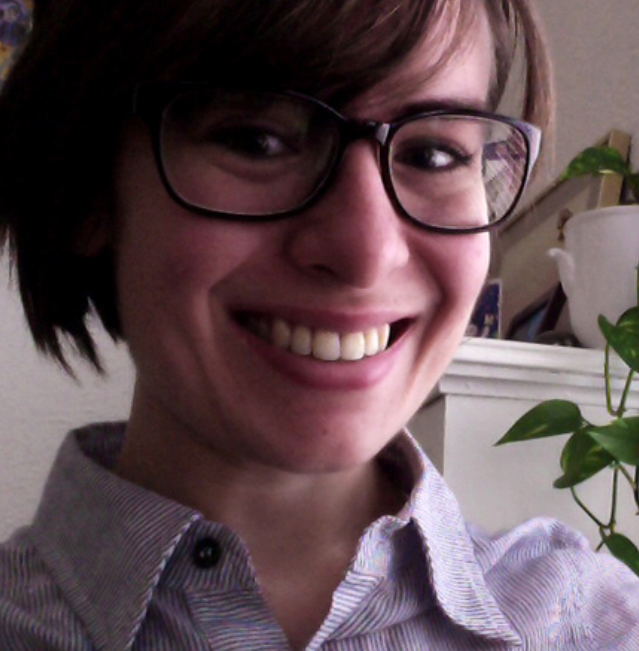
A Guest Blog from Sarah Ramler at Demo Duck
You’ve always wanted to use animated videos in your marketing campaign, but you worry that it won’t show the “human” side of your company. Or it seems too cute, which doesn’t fit your branding. Plus, a lot of the times animated videos are used on websites as how-to or explainer videos and you really want to tell your company story or the story of how your product came to be. So you start researching live-action video production companies and scan your company directory to see who wouldn’t turn bright red on camera.
Of course live-action is a great way to tell a story and show real people solving real problems. We over at Demo Duck do them all the time! However, there is real power to an animated video and it’s anything but cutesy. Animation allows you to tell a story on a whole new level — one that isn’t bound by the limits of the real world. Animated videos are great at storytelling because they allow you to create a world that embodies your brand’s essence. This may sound a little abstract, and a little out-there, but hear me out.
Animated Videos are a Logistical Dream
Have you ever tried planning a dinner date with some friends? Think about it. When you ask your friends where they want to eat, what kind of food, and what day and time, you just invited yourself to an email string that seems to never end. No one can seem to agree to anything and everyone’s schedules never seem to align.
Now imagine doing it for a live-action video production. You have to make sure that the crew, producers, the talent, the weather, and the space are all synced up. Now let’s say it starts to rain and it’s an outdoor shoot. Or, your actor can’t perform because they have strep throat. This is just an example and even I got a headache!
With animated videos, you can kiss that headache goodbye. You’re no longer subjected to the messy world of people’s schedules. All you need is to hire the creative talent you can trust. No more actor auditions or location scouting. Austin Saylor, in an interview with Wistia, says that animation is also a great option when you want to tell a story that takes place in a faraway location — but because of budget or what-have-you, it might not be feasible.
Having less to worry about means you can stick to a tighter timeline — and getting a project done on time always feels good. But that’s not the only benefit for picking animation over live-action. When you have an animated video, it’s easier over the long term to edit and refine to meet future needs (like a product update or a UI change). You won’t have to worry about booking a reshoot or hoping that your talent is still available. Animated videos make great evergreen content.
In the end, animation is more cost-effective. So if you’re a startup or a small business, it makes sense to go with an animated video. Not only because you may have a smaller budget, but you might have a lot of product updates in the next year or two. When you have a rapidly changing product or app, an animated video is easier to maintain and can keep up with your growing company.
Animated Characters Allow For Stronger Brand Connections
In a typical live-action video, you may only have two to three actors in it, which means there is a chance that potential customers may not identify with the actor. Returning to the Wistia and Austin Saylor interview, he says, “So while live video certainly helps humanize your company, animation with simple characters could help your audience connect with the hero character that your brand is there to help.” In short, it means that you can create a character that embodies a feeling or an idea and there are no physicalities that can create superficial barriers. For example, we did an animated video for Wheels for Wishes where the star was a fox cub that demonstrated the innocence of a child:
The focus was less on the character itself and more about telling Wheels for Wishes’ story.
Animated Videos Explain Complex or Abstract Ideas, Simply
When you are no longer bound by the limits of the physical world, it becomes easier to explain some of your more abstract ideas. For example, it’s hard to wrap your head around the idea of cloud-based software, and having a talking head explain it may not help explain it at all. With an animated video, the idea of a “cloud” can be drawn out and provide a visual aid in explaining the concept.
A great example is the old “bouncing ball” or “blob” animated video for Zoloft (an anti-depressant). People tend to understand the generalities of depression — they know people are sad, sleepy, or lose interest in activities if they suffer from it.
However, this bouncing ball removes any associations we would have with the person suffering from depression and focuses solely on the feeling. We all know what it’s like to be sad, but this animated video helps people identify that depression is much more than sadness.
Animated Videos Helps Viewers Understand Characters’ Stories
The same is true for the environments that the characters live in. In National Geographic’s short clip on Storytelling Through Animation, Davis Guggenheim (director) was asked why he chose animation when telling the story of Malala Yousafzai (who is, of course, a living person). His response was about how it allowed him to depict the world as she remembered it. It provided a sense of nostalgia for the viewer to get a better understanding of her world. With that foundation, we can better understand the challenges she faced.
When the viewer resonates with a character, it builds empathy. When there is empathy, there are relatable problems and relatable solutions, and your company provides those relatable solutions. Returning back to the topic of depression, a viewer may not think they have depression, but it could be because they don’t recognize what it is. When they see the animated video that projects a certain feeling, and if they align themselves with that feeling, they may discover that they too suffer and there is a solution.
Animated Videos Create a Controlled Environment
Along the same lines, animation allows for the control of the character’s environment. In the same National Geographic clip, Jason Carpenter (animation supervisor) says that using animation in telling Malala’s story allowed him to create a world that is more poetic and impressionistic, which puts more power into the storyteller. Want to show that your product makes things easier? An animation of simple and clean workspace in bright, vibrant colors leaves the viewer feeling joy — which is a great feeling to associate with your product or service.
Music is also a very important aid in creating this. The world has become multisensory, which makes your video more memorable. In a campaign that Marmoset did with Nike+, they used music to create a sense of upbeat speed and empowerment — a great partner when it comes to speaking to runners and joggers. I mean, that’s why they partake in those hobbies.
Wrap-up on Animated Videos
Animated videos allow you to create a beautiful world — one where things can be explained simply, characters project feelings that are recognizable, and viewers are presented with relatable solutions. So forget about cutesy and think about impressions. You want your viewers to walk away with a strong, positive feeling and an association with your company’s product or service. Trust us, nothing drives impact like shared stories.
When deciding between an animated or a live-action video, consider your budget, the longevity of the product or service, and the feeling you want to impress upon potential customers. If you feel that you’ll need something that can be updated frequently or you’re not sure who to cast to star in it, an animated video may be the way to go. Either way, it’s important to build empathy with your viewers and understand their world and challenges.

About the Author
Sarah Ramler is the Marketing Coordinator for Demo Duck, a Chicago-based video production company. When she’s not writing about video marketing tips, she’s mostly tweeting about ice cream. Follow Demo Duck on Google+ and Twitter.

Great feeling to read this post. It is really a thought provoking article.